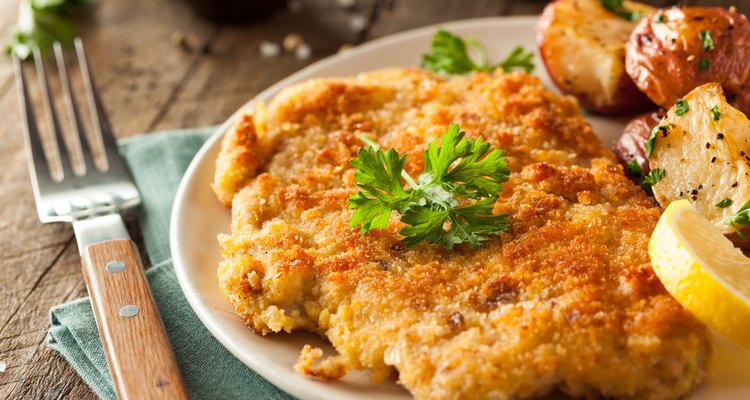
bhofack2/iStock/Getty Images
Frying crumb-coated veal cutlets to a crispy golden-brown is the first stage of creating classic dishes that feature the mild-flavored, lean meat. Ensuring the crunchy coating sticks to the thin pieces of light meat while they cook is a key to making visually attractive veal Parmesan, savory weiner schnitzel and zesty veal piccata that has a portion of breading in each mouthful. If you're cooking dishes with international flair or a simple, comfort-food meal like breaded veal cutlets with mashed potatoes, take a few precautions to keep the breading intact while you cook the veal in a frying pan.
Sprinkle about a cup of plain white flour evenly on a large dinner plate or in a similar size pan.
Break two to three eggs into a pie plate or similar size shallow pan. Beat the eggs briskly with a fork until the yolks and whites are thoroughly combined.
Spread about two cups of seasoned bread or cracker crumbs across the bottom of a shallow baking pan or pie plate.
Pour a sufficient amount of oil into a large frying pan to form a 1/4-inch-deep layer in the bottom of the pan. Turn the heat to medium high.
Season both sides of raw veal cutlets lightly with salt and pepper while the oil is heating. When the oil is hot, you'll be ready to coat the cutlets rapidly and get them all in the pan within a few moments.
Lay a cutlet on the flour and shake the pan gently. Turn the cutlet over and shake the pan again to give the veal a thin coating of flour. Lift the cutlet up and shake it gently to remove any loose flour.
Grasp the flour-covered cutlet with your fingertips, set it in the beaten eggs and swish it around gently. Turn the cutlet and gently swish it again, then lift and allow the excess eggs mixture to drip back into the pan.
Set the egg-coated cutlet flat on the crumbs and shake the pan so the crumbs cling evenly to the cutlet. Turn the cutlet over and shake the pan again. Pat the cutlet to press the crumbs firmly into the egg layer. Turn the cutlet over and pat it again.
Pick the cutlet up from the crumbs and lay it gently into the heated oil in the frying pan. Use your fingers instead of tongs, which can dislodge the breading from the veal. Set one edge of the coated cutlet into the pan, then gently release your hold, allowing the cutlet to slip into the hot oil without splashing.
Move quickly to coat additional veal cutlets and place them in the pan without overcrowding. Leave sufficient room between the cutlets and the pan's side to maneuver a spatula, and don't allow the cutlets to touch each other.
Lift the edge of the first cutlet placed in the pan after it has been frying for about 1-1/2 to two minutes. Allow it to fry another 20 to 30 seconds if it is not yet lightly browned. If it is golden-brown, slip the spatula completely under the cutlet. Steady the cutlet with the back of a fork and turn it over carefully to avoid knocking off any of the breading. Turn over the remaining cutlets.
Fry the cutlets for another one to three minutes until both sides are browned. Very thin veal cutlets only need to fry for three to four minutes total, while 1/4-inch-thick cutlets will fry in five to six minutes.
Slide the spatula under each piece of breaded veal, guiding it with a fork if necessary. Lift the cutlet and hold it above the pan for a few seconds, allowing any excess oil to drip off. Slide the breaded veal cutlets carefully off the spatula onto a platter or into a casserole dish.
Related Articles

How to Fry Pork Chops Without the ...

How to Make Sour Cream Pork Chops
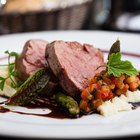
How Long Do You Bake Veal Cutlets?

How to Cook Fried Drummettes
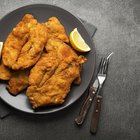
How to Cook Boneless Skinless Chicken ...
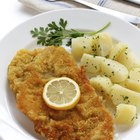
How to Fry Veal Cutlets
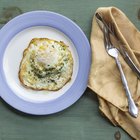
How to Make Eggs Over Easy
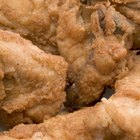
Can I Bread Chicken Breasts With Just ...
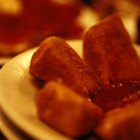
How to Fry Queso Blanco

How to Cook Breaded Tenderloins in the ...

How to Bake Bluegill Fillets

How to Bread Chicken With Flour & Eggs ...
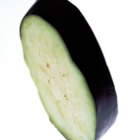
How to Dredge Eggplant

How to Cook Calamari in the Oven

How to Cook a Breaded Thick Cube Steak

How to Cook Pancetta

How to Fry an Egg Without It Turning ...

How to Cook Turkey Cutlets
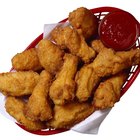
How to Make Flour Stick to Chicken Wings
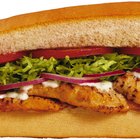
How to Cook Chicken in Olive Oil With ...
References
Writer Bio
Denise Schoonhoven has worked in the fields of acoustics, biomedical products, electric cable heating and marketing communications. She studied at Newbold College and Middlesex Polytechnic in the UK, and Walla Walla University. A writer since 2008, Schoonhoven is a seasoned business traveler, solo tourist, gardener and home renovator.
Photo Credits
bhofack2/iStock/Getty Images